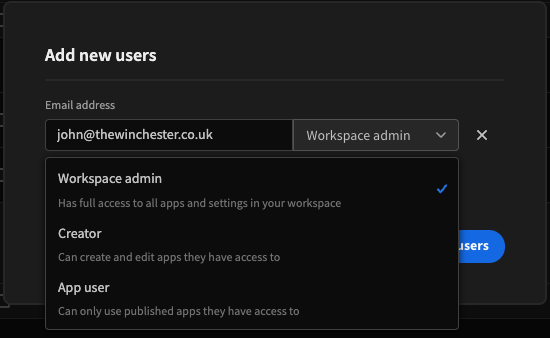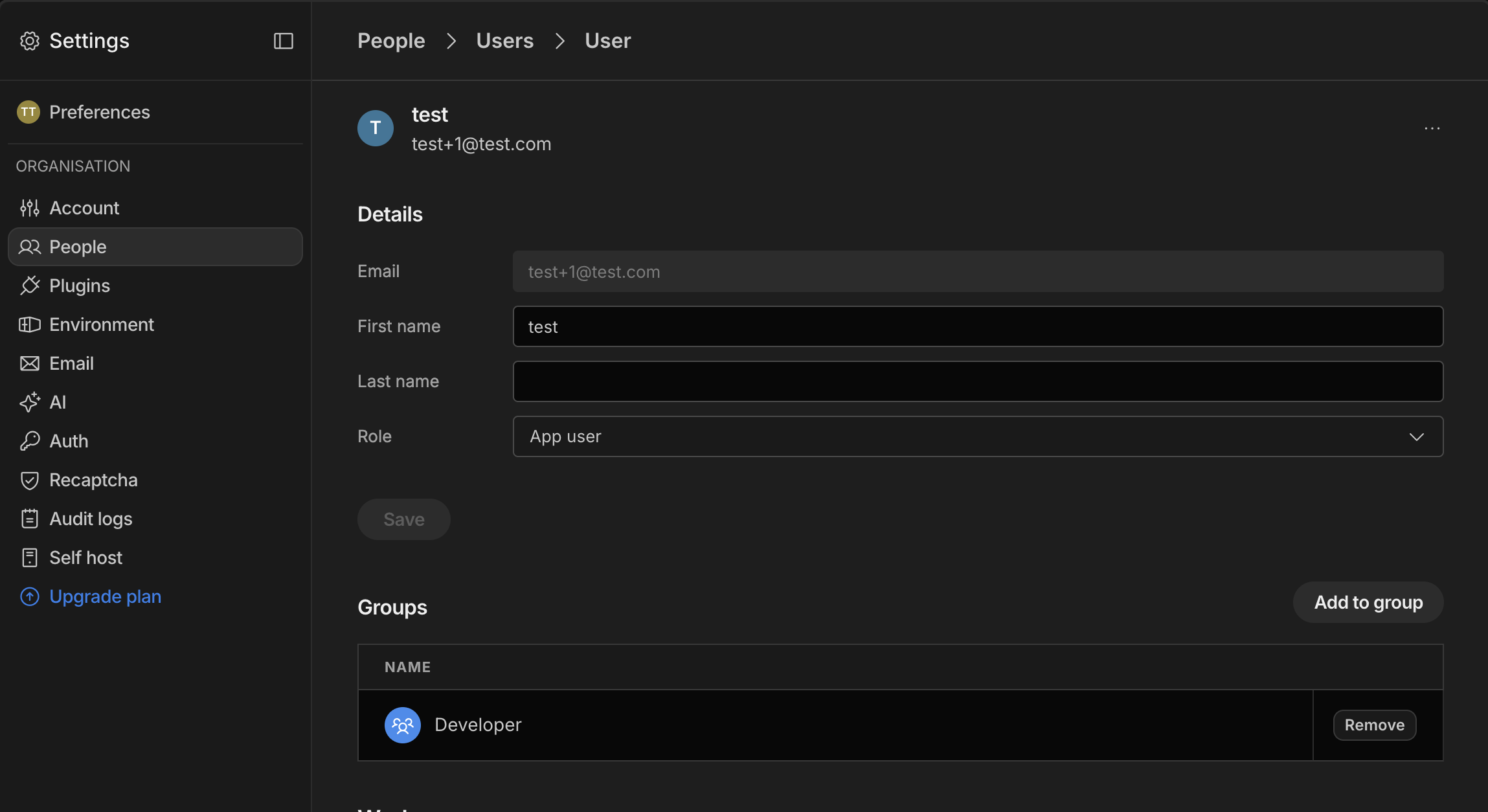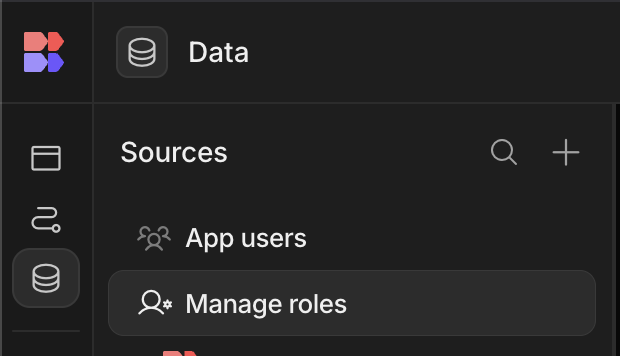User roles
At a high level, a user can have access to the Portal as an Admin, or simply be a Member, i.e. an End User of authorised apps.
Additional fine-tuning of permissions can be achieved through the Creator role which allows a user to be a Builder of some apps, and be restricted to an End User for others.
Access permission
There are three levels of user role permissions within Budibase:
- Workspace Admin - Has full access to all apps and settings in your account
- Creator - Can create and edit apps they have access to
- App User - Can only use published apps they have access to

Admin users can add new users
Publish your application to give users access.App Users are only be able to view published applications.
The Workspace Admin role allows the user to manage users and global settings.
Changing permissions
A Workspace Admin user can edit user permissions within the Portal, by clicking on the Settings tab. Then within the modal click people.

Click on the user you want to change, and then set the Role.

You can close the screen once you're happy with the change in your access. The permissions save automatically.
Workspace specific roles
All users in your app without Workspace Admin permission will only see applications you give them access to. But not only can you configure which applications each user can see, you can also configure their role in each application.
There are several roles to choose from, which impact what the user can do and see in your application based on the roles you've defined for each section inside your application.\ Access levels can be set for your each of your screens.
Higher-tier roles will be able to see everything lower tiers can see, plus their own role-specific elements. This means an Admin role can see all the pages built for Power, Basic, and Public roles.
| Order | Role | Description |
|---|---|---|
| 1 | Public | Can see un-authenticated. Cannot be given to a user |
| 2 | App user | Lowest authenticated role |
| 3 | Admin | Highest authenticated role |
Order matters!The order of user role matters. Higher roles can see everything from lower roles as well as their own.
Adding custom roles
The core workspaces roles cannot be deleted, however you can add and remove any number of custom roles if you need more granular access control.
Within your workspace, navigate to the data area. Then click Manage roles

A page on the right will appear with a button to create a new role

Inherits Role determines the rank of your new role. In this case, a Super user will be able to access all screens of access level Super, Power, Basic and Public, but will not be able to access Admin app screens.
Base Permissions determines the permissions of the role. Options include:
| Order | Role | Description |
|---|---|---|
| 1 | Public |
|
| 2 | App user |
|
| 3 | Admin |
|
| 4 | Creator |
|
Updated 3 months ago